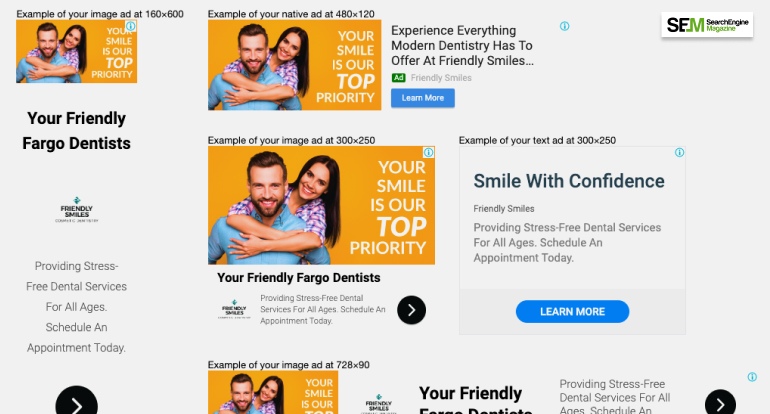Tips to Work on Marketing in Your Company
Apr 24, 2024

Apr 24, 2024

Apr 03, 2024

Apr 01, 2024

Mar 30, 2024

Mar 30, 2024

Mar 30, 2024

Mar 29, 2024

Mar 28, 2024
Sorry, but nothing matched your search "". Please try again with some different keywords.


We all know that Google ads management is not as easy as many people think. Besides, a Google ads audit is an absolute must when you intend to take over a new account from a client or stepping into a new role within your job environment.
It is always essential to understand where things are standing before you begin making any positive changes going forward.
A Google ads audit checklist is compared to a doctor’s checklist to evaluate the performance of marketing campaigns.
It is an excellent practice to keep checking the performance of your ads from time to time to ensure that you are getting the best out of your campaigns. Let’s look at the Google ads audit checklist in ten easy steps.
Every marketing campaign targets a specific group within the market audience. In order to target a specific audience, you need to understand the best practices of using Keywords with a clear picture in mind about what you want in business.
Focus on the user’s intent and face the roles of the customer. Do not focus on what your business wants but consider what pains your customers.
Even though you might have proper keywords, ensure that they are relevant to your audience. Carry out proper research to uncover healthy information about some of the best keywords within your industry.
What does your ad mean when it lacks a call to action? This is an essential element that you should not miss out on in your campaigns. You need to think about a proper way that you can use to engage users and encourage them to convert at the end.
Always remember that the ad is likely to lead to some sort of a landing page. The page should have a clear call to action. Always remember that the ad targets the most appropriate person to click it and explore further.

Before getting your hands into your Google ads account, you need to begin by reviewing your goals in business. Get a clear understanding of your goals and the business in general. Note that there are different conversion goals that you need to understand and the performance outcomes that you are looking for.
Define your business goals clearly and make them simple to attain. Ensure that you are working towards attaining specific goals and channel all your concerns in the same direction.
You might have a good account with everything needed and still fail to attain your goals in business. It ensures that you have a perfect hierarchy since it also impacts the amount of time it takes to manage the Google ads account. You can check out different ways of structuring your Google ads account to enhance its effectiveness.
You can structure your account using your logical business objectives, service line, subject matter, persona targets, and many more others. Note that there is no right way you can structure your account; you only need to plan it in a manner that gives you more control over it.
Related Resource: Why Should You Link Your Client’s Google Ads Account To Search Console?
This is one of the areas where many people tend to get confused when doing the Google AdWords checklist. When you hear of ad words, always remember that it refers to a group of ads and not keywords. Once you confuse the two concepts above, you have missed out on a major point that will likely impact the final results.
When doing a Google ads audit, do not overthink about keywords since there are also other essential elements that you need to consider and evaluate keenly to be on the safe side. Concentrate on your landing pages, quality scores, and the ability for your customers to convert.

In most Google ads accounts, ads are left to run independently without being checked. The most important thing you can do at this point is to set ads rotation and ensure that every ad group has a couple of ad versions.
Ensure that you test all the versions of the ads to identify which one performs better than the other. Despite the fact that the Google algorithm monitors ads operations, it is dangerous to leave things on autopilot.
You can utilize different variations in every ad group depending on the number of ads that you have. Also, in the ad headline, incorporate a call to action to propel the effectiveness of the ads.
Yes, it is pretty easy to review your campaign’s settings quickly and move on to the next thing. People forget that they need to get back to the settings and make a few adjustments to get the best out of their efforts. However, before making any possible changes, you need to review a series of things before you conclude.
Check on the geographic targeting of the ads and their accuracy. Ensure that you have advanced location targeting features to cover all your target localities fully. Check whether you have the most appropriate dayparting in place to get the best out of your ad campaigns.
A landing page is considered an external part of Google ads. However, it has a significant impact on your ad campaigns’ success and affects all other metrics within your campaigns. There are many landing page builders available online that can help you craft the perfect landing page for your campaigns in no time.
You need always to remember to analyze the performance of this crucial element even if it does not show up on your radar. When evaluating the quality score of your performance, the landing page impacts the final figure you get.
The landing page should have consistent wording with a clear call to action to enable customers to navigate easily. Create a positive user experience to enhance the conversion rate.
Check if your conversion tracking has been set up correctly. Ensure that you have connected your account to Google analytics to get out every aspect outlined clearly. Evaluate if there is any type of leakage within your conversion funnel. Note that this needs to be checked from different points of view, such as the landing and conversion pages.
As you continue analyzing your Google ads account, you need to have a proper way of documenting all the key elements to highlight areas affecting your general performance.
Also, it is evident that your findings are likely to be shared by other people, either internally or externally. This means that you need to get a proper way of formatting your report to help you create a proper action that will help you solve the problem at hand.
Once you are done doing a Google AdWords audit, you stand a better chance to identify possible errors within your campaigns and get the way out. The above discussed are some of the significant elements that you can consider while doing your audit.
Read Also:
Arnab is a passionate blogger. He shares sentient blogs on topics like social media trends, current affairs, business, lifestyle, health, etc. To get more of his contributions, follow Search Engine Magazine.
View all Posts
Tips to Work on Marketing in Your Company
Apr 24, 2024
SEO Evolution: Exploring Latest Updates and T...
Apr 03, 2024
Creating Successful Marketing Automation Stra...
Apr 01, 2024
How To Leverage Link In Bio For Maximum Impac...
Mar 30, 2024
The Role Of Social Media And Search Advertisi...
Mar 30, 2024

